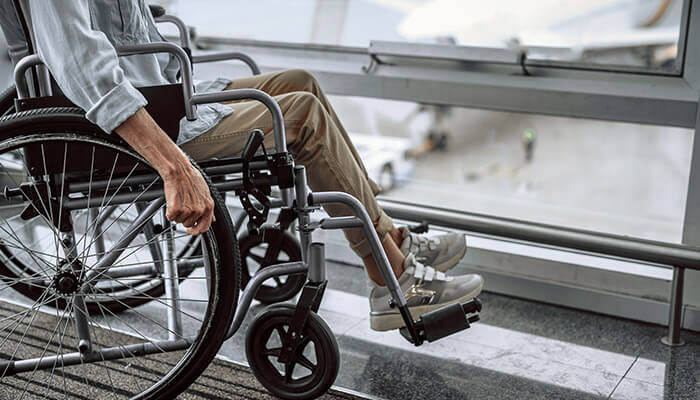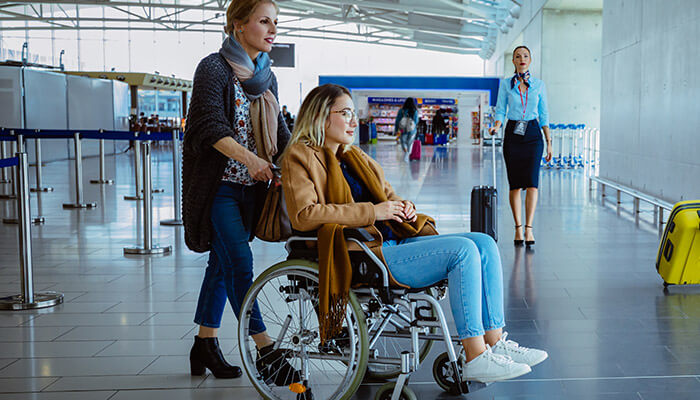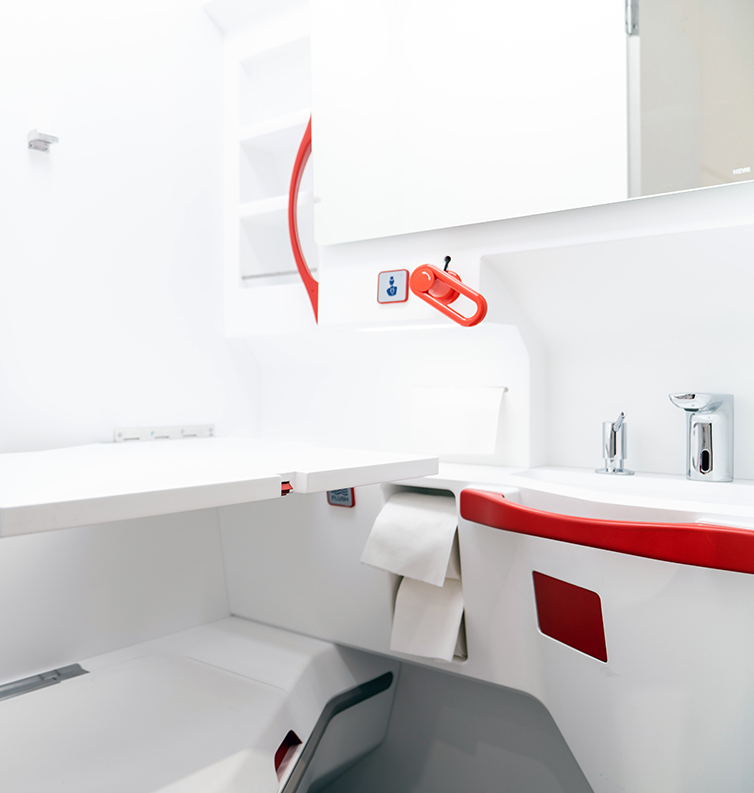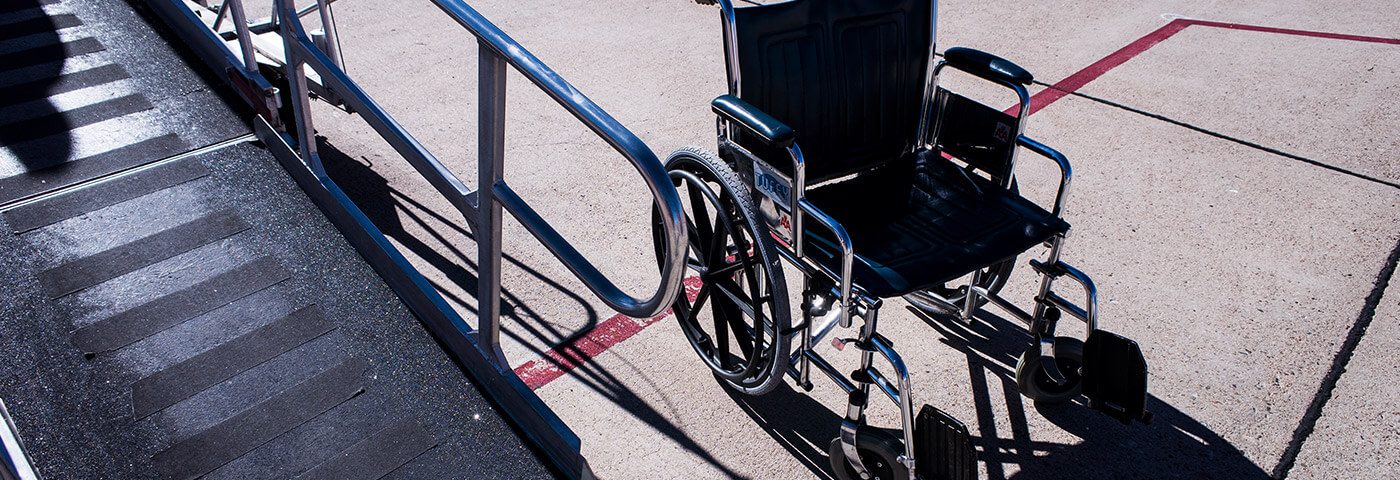With airlines looking to get passengers back onboard in 2021, those with extra accessibility needs should not be overlooked. Leisure travellers are widely expected to spearhead the return to travel following the recent crisis and it will be important that the cabin experience is fully accessible to all.
Flying should be for all
Back in 2019, the Passenger Experience Conference (PEC) hosted ‘Flying for All’, a session dedicated to examining how the onboard experience could work for those with mobility, visual or hearing impairments. It was one of the most impassioned sessions ever held at PEC, with speakers and audience alike keen to share their thoughts and experiences.

Yet the goal of making the journey safe, dignified and enjoyable for everyone seems just as intractable. This is not from a lack of individual innovations and initiatives, but the broad mindsets within aviation could benefit from some introspection. It is self-evident that implementing systemic changes for passengers with disabilities will require a highly collaborative approach and the setting of new industry standards.
A barrier to travel
Concerns about provisions for passengers with disabilities are not just a barrier to flying for those individuals, but also to their associated family members and companions. Research by advocate organisations Flying Disabled and ableMove suggests that 80% of passengers who use a wheelchair fly with at least two or more people in their group.
The potential economic contribution of travellers with disabilities is one that should not be underestimated. The 2020 Market Study on Adult Travelers with Disabilities, by the Open Door Organization, found in 2018-19 that more than 27 million Americans with disabilities took 81 million trips. Of those trips, 29.6 million were by air, generating $11 billion in spending (up from $9 billion in 2015).
Feeling safe onboard
A broad spectrum of health issues, physical and mental impairments can make air travel a stressful experience.
A vivid snapshot of what this means is outlined in the Survey on Air Travel for Wheelchair Customers, published by Flying Disabled and ableMove in April 2021. The majority of wheelchair users say they do not feel very safe in the aisle chair. Over two-thirds suffered the stress and indignity of being taken onto the aircraft during or after other passengers had started boarding and more than half had their own wheelchair damaged in transit. Some three-quarters of those surveyed would fly more frequently if they could stay in their own wheelchair for short-haul flights. Only one in four rated their flying experience as good or better than good.

Christopher Wood, Aviation Accessibility Consultant at Flying Disabled says: “If we ignore airports and focus on the aircraft cabin itself, then facilitation is the biggest area. Weighed down by the burden of the revenue model, innovation can be stifled and blinkered.”
With fewer people flying during the pandemic, the additional space in the cabin has been a bonus for passengers from the disability community. But as airlines have taken measures to reduce physical contact and make the passenger experience as touchless as possible, Wood points out that wheelchair users still have to be manhandled from their own chair to an aisle or airport wheelchair.
Then add into the mix the risk that personal wheelchairs, which can cost thousands of dollars to replace, being lost or damaged in transit. The number of lost or damaged chairs in the USA amounted to 10,250 in 2019, according to the Department of Transport (DoT).
Using personal wheelchairs
Efforts to enable passengers to use their own wheelchair in the cabin are ongoing. In late July 2021, Molon Labe Seating is set to do some in-cabin testing of its Freedom Seat prototype with the help of Boeing. The Freedom is a two-seat configuration in which the aisle seat slides over the window seat to provide space for a wheelchair, which is then secured in place via a docking system.
“Our focus has always been to offer a design that doesn’t cost the airlines any more time or surrender revenue,” says Molon Labe CEO Hank Scott. The next round of testing at Boeing’s facility will focus on manoeuvring in and around the cabin.
Time to update regulations
A key obstacle will be securing regulatory approval for the wheelchairs themselves. Scott explains: “Most powered wheelchairs are customised by their owners, even the location of the docking system mounts changes between chairs. That to me is the toughest challenge, and we are hoping that people with restricted mobility (PRMs) would not have to purchase another chair specifically approved for flying as that is an expensive option for them.”
This problem suggests a need to specify flight-enabled wheelchair design guidance. And, as Scott acknowledges, the Freedom Seat is just one element of the solution: airline policies will also have to evolve and “best practices may take years to arrive at”.
Lavatory design issues
Lavatory design is arguably an even more critical issue. New twin-aisle aircraft must have accessible lavatories under DoT rules. There is currently a move to amend the Air Carrier Access Act to require airlines to meet defined accessibility standards. But meanwhile, for passengers on single-aisle aircraft the experience can be bleak, particularly on long haul flights.
The Flying Disabled/ableMove study reveals that 62% of wheelchair users dehydrated or starved themselves before flying in order to avoid using the onboard lavatory. Wood says: “Campaigners around the world are crying out for an accessible toilet on these aircraft, many would argue it’s a civil right to have access to a toilet.” He observes that although Airbus offers the Space-Flex convertible PRM lavatory for its narrow bodies, cabin crew often do not know how to prepare it and passengers with disabilities do not always know of its existence.
New designs for lavatories
Several interiors specialists have developed accessible lavatory solutions for narrow bodies that work without impacting business models. In 2020, Acumen Design Associates and ST Engineering partnered on ‘Access’, which features a moving wall that expands the interior space by 40% from the standard footprint with no reduction in seat count or galley space.
Another is LAV4ALL, a retrofit solution for the A320 aircraft family developed by FACC. The door opens at a right angle, blocking off the aisle and providing more privacy and ease of access when entering. Once the door is closed the galley can be entered again as normal.

LAV4ALL, which is shortlisted in the 2021 Crystal Cabin Judges’ Choice Award, also takes account of the needs of passengers who have poor eyesight or hearing difficulties. Operating elements and handlebars are aligned for better use and accentuated by colour and high contrast labelling. “We deliberately choose not to use digital solutions because our research showed that they are difficult to use for people with disabilities,” explains Rene Adam, Head of Research and Technology at FACC. “The full understanding of human needs will affect future cabin designs in a significant way.”
Accessibility should be a priority for all airlines
The issues around accessible lavatory design are a microcosm of the greater problem. The challenges that confront passengers with a visible disability may be the starting point for change, but there is a much wider cohort who also feel a loss of dignity from the inflight process and, as a result, are stressed even before they start their journey. This wider problem needs to be understood and addressed by a willingly collaborative community across aviation to truly make Flying for All a reality.



